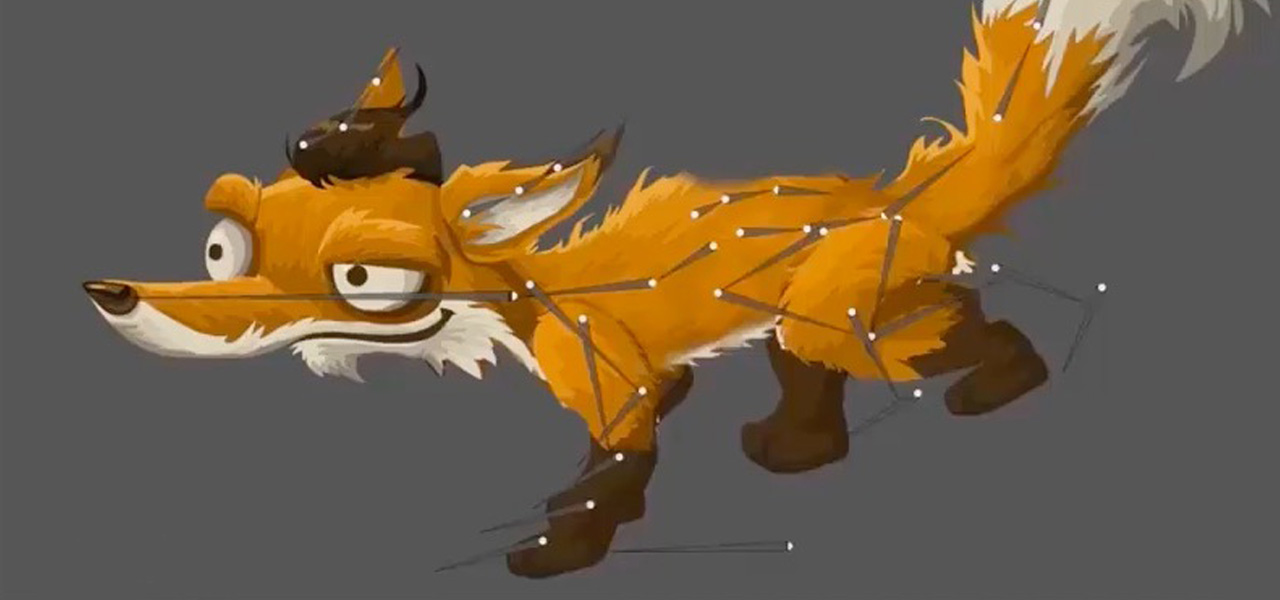

Midas Touch Automates 2D Animation With New Creature Tool
A new piece of software just released from animation startup Midas Touch Interactive called Midas Creature is designed to add secondary animation to 2d characters – automatically.
Midas Touch Interactive, based in Silicon Valley, has so far been concentrating on physics engine solutions predominantly for games. Midas Creature extends those capabilities to 2d animated characters.
Midas’ technical director Jiayi Chong, a Pixar alum with credits including Toy Story 3, Wall-E, and Up, tells Cartoon Brew how Midas Creature works.
Secondary motion in animation typically includes things like cloth, hair, flesh, and skin. In 3d characters, this kind of ‘technical’ animation tends to happen after keyframing. But Chong suggests that secondary work can be tedious.
“A lot of animators will prefer focusing on animating the actual performance of the character as opposed to filling in the time-consuming portions of it,” he said. “The software allows animators to keyframe their directed poses manually, and then through the physics procedural motor system, they can select specific bones or body part meshes that they want to allow the system to automatically generate the secondary motion for.”


Right now, this is for 2d animation, and Chong himself describes Midas Creature as a “2d mesh based cutout/puppet animation tool.” It works by taking a single image ‘atlas’ of character body parts and allowing an animator to deform the different body parts of a character using mesh deformation techniques.
“The internal motor system of Midas Creature takes into account the input motion provided by the animator and processes it to generate the corresponding secondary motion,” explained Chong. “The results of the secondary motion can be tweaked. Animators can change how stiff, loose, and damped the motion is and the results are reflected to the animator in real-time. This also means that the animator can change specific key poses in the timeline and have the system automatically update the secondary motion immediately, providing a fast iteration workflow.”
The idea is to create realistic secondary motion for elements such as clothing, hair, or even animal tails. An animator still carries out the typical approaches to producing animation, but, as an example, if a flickering fire is required, the flames can be hand-drawn per frame and then Midas Creature used to add the ‘wavering’ effect with its procedural physics motor system.
Midas Creature is a standalone program and runs on both Windows and Mac. It provides plugins to most major game engines such as Unity and Unreal Engine. “The character meshes and skeletons are animated and deformed in real-time from within the game engine itself,” said Chong, a feature that will “result in big savings in terms of disk space and memory since there is no frame-by-frame sprite exported out.”

Midas Creature also supports the export of animation to raw sprite frames, and sprite sheets in addition to file formats like FBX and Alembic, which allows work created in Midas Creature to be imported into programs like Maya and Houdini.
Midas Touch is pushing for Midas Creature to be used mostly in 2d games and products, especially on mobile, PC, and console platforms (and of course on the web, and in ar and vr experiences that use 2d animations). Chong also notes the tool can be used to animate background elements in 3d games.
Does this mean there might be a move to also allow for secondary animation on 3d characters? Not yet, Chong told Cartoon Brew, though Midas Creature is only the first product in what he envisions will eventually become a whole suite of 3d animation products.
The product is available at ‘Enterprise’ and ‘Indie’ levels (the levels range in licensing periods and depend on the customer’s company revenues). You can find out more at www.creature.midasphysics.com.

